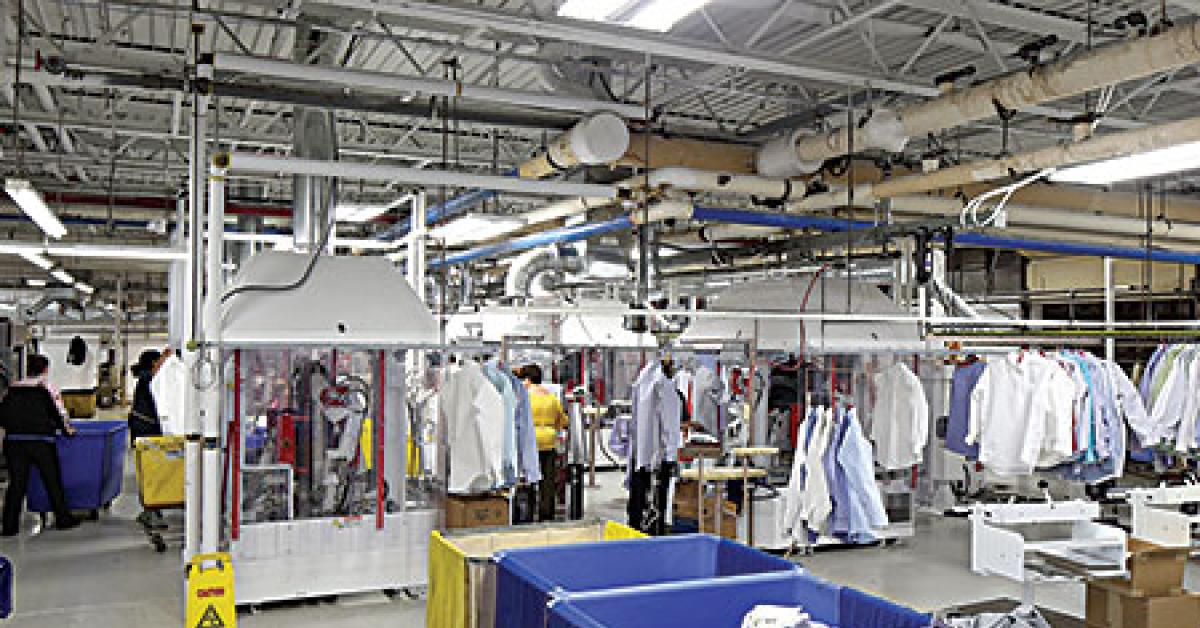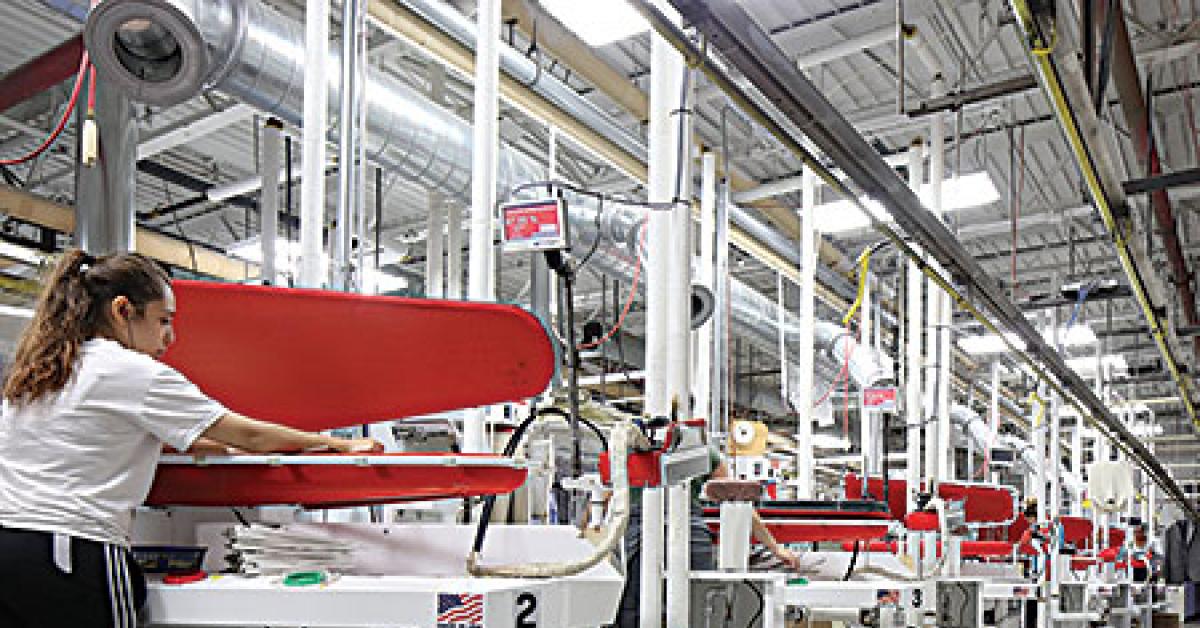KENTWOOD, Mich. — “It was something I could do,” says George Cares, of launching Sheldon Cleaners, in 1949. During its 66-year history, the company has reinvented itself multiple times; embraced and eliminated revenue streams; and overcome economic and industry-specific hurdles.
Today, George’s sons, Louie and Paul, lead the enterprise. While Sheldon Cleaners remains grounded in the mission and culture George created—one of quality and convenience—it’s morphed into a multi-faceted business encompassing several revenue streams and customer-focused services.
REINVENTED AND RENOVATED
Sheldon Cleaners eliminated the use of perchloroethylene (perc) in 2006, substituting a solvent created with n-propyl bromide-based detergent—for a few years.
“We were losing interest in dry cleaning,” he says. “We didn’t want to buy more perc machines because perc is harmful to our employees, us, and the environment. But our drycleaning machines were becoming corroded ... We were at a crossroads.”
That’s when they turned to Michael “Stucky” Szczotka, who had sold them a few Continental Girbau soft-mount washers through the years that the brothers loved. Louie and Paul called Szczotka about developing a vended laundry.
As the owner of Carrington Cleaners, a dry cleaner in Washington Township, Mich.; CRDN of Southern Nevada; and Eagle Star Equipment, a commercial laundry and drycleaning equipment distributor in Troy, Mich., Szczotka knows dry cleaning and laundry. He also knows the vended laundry business, as owner of New Wave Laundromat, in Sterling Heights, Mich.
While Szczotka was all for helping the Cares brothers develop their first vended laundry, he was also adamant they upgrade their drycleaning plant.
“He came in and pumped new life into Sheldon,” says Paul.
A complete plant overhaul commenced that resulted in huge throughput gains and labor and energy savings, according to the Careses. Simultaneously, Szczotka helped Louie and Paul design and equip their new, high-speed vended laundry.
Six Union SystemK4 drycleaning machines (each with 90 pounds capacity) replaced five 75-pound and five 100-pound drycleaning machines from another manufacturer.
“We are using less water and energy and delivering better quality,” says Paul. “One of our ads says, ‘We wish all cleaners would go green!’ We have a smaller carbon footprint here than most people have at home.”
The new machines eliminate lint and static, offer easy maintenance, reduce sorting and loads per day, and drop chemical usage to a trickle, according to the Careses. Sheldon Cleaners uses just one 55-gallon drum of solvent per year, compared with having used one 55-gallon drum of solvent each week previously, a savings of more than $100,000.
Once garments are dry-cleaned, they’re hung on a 1,500-foot rope conveyor—which Paul invented—and transferred through the finishing stations. That conveyor carries items through the plant at a rate of 500 feet per minute.
Older single leggers, pant toppers and puff irons were replaced by eight Unipress pant-pressing stations, which have cut labor hours and boosted throughput and quality. Each station features a double legger, tensioning topper and single puff, according to Szczotka. “Each station is identical so it simplifies employee training,” he says.
Once pants are pressed, they are returned to the rope conveyor and travel to inspection. Other items, such as suit coats, jackets, dresses and blouses, are pre-finished at one of two stations consisting of two Unipress Versaform plus with Collar & Cuff or two Sankosha Rotary Tensioning Form Finishers. They then move on to utility presses.
Meanwhile, shirt processing is streamlined, allowing Sheldon Cleaners to complete 22,000 shirts weekly. Shirts are bagged according to process (starch, no starch, etc.) and washed in soft-mount 90-pound-capacity Continental E-Series Washers.
The decade-old Continentals continue to offer great productivity and quality, according to Paul. Because they reach 384 G-force extract speeds, they remove more water during extract (when compared to lower-speed washers and hard-mount washers), which cuts resulting dry time. They are also highly efficient and programmable, which allows Sheldon Cleaners to control every conditional aspect of the wash process, while cutting operational costs, the company says.
After shirts are washed, they are finished using six new Unipress Hurricanes and three Quad Tensioning Rotary Collar & Cuff units. The equipment is arranged in three sets, with each set consisting of two Hurricanes and one Quad Collar & Cuff unit. The new machines require three teams of three, for nine total operators. The prior machines required 20.
“The new machines, with their nine operators, produce up to 540 shirts per hour, or 180 shirts per station,” says Paul. “That’s greater than a 50% increase in throughput.” Moreover, he says he’s thrilled with the shirt-finishing quality.
Once items pass through finishing stations via the rope conveyor, they are inspected, bagged, labeled and sorted by a new Metalprogetti automated assembly, bagging, labeling and sorting system.
Previously, items were manually sorted and bagged at the satellite stores. Now, they are automatically done at the plant, saving approximately 500 labor hours per week. It will save $250,000 per year in payroll and realize a 15- to 18-month return on investment, says Louie.
Finally, gains in energy efficiency have reduced operational costs and improved profits. A new air compressor costs just $30 a day to operate, compared with the old compressor’s $100 per day. “It monitors the demand of load and if it’s not requiring 100% load, it adjusts itself,” says Paul.
Sheldon Cleaners is set up for greater profitability. “We are projecting a 10-15% elevation in profit,” says Paul.
Throughout the plant, the brothers added inverters to motors that didn’t have them. “The Continental washers and Union SystemK4 drycleaning machines all have inverters and save a considerable amount of energy by eliminating energy spikes,” says Paul. “That’s why we added inverters to other equipment, including water pumps and the dry-vacuum system.”
And a 700-gallon water tank was added. It fills with cold water that is used to economically cool the drycleaning machines. Then, that water byproduct, which is heated by the drycleaning machines to 100 F, is stored in a second water tank.
“When it’s needed, it goes to the water heater to raise it from 100 F to 140 F for use in the wash cycle,” says Paul. “So, we are only heating it from 100 F to 140 F, rather than from 65 F to 140 F.”
All told, Sheldon Cleaners is more productive, efficient, green and profitable than ever, according to the Careses. Plus, it occupies a 20% smaller footprint, which is how Louie and Paul were able to carve out 6,500 square feet for their new high-speed vended laundry and café.
Check back tomorrow for the conclusion!
If you missed Part 1, you can read it HERE.
Have a question or comment? E-mail our editor Dave Davis at [email protected].


